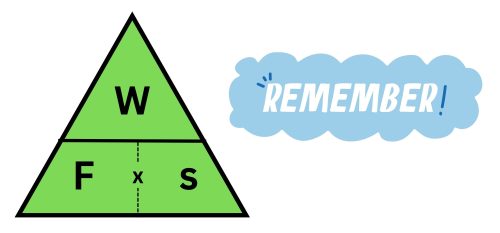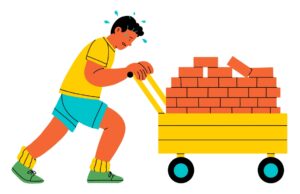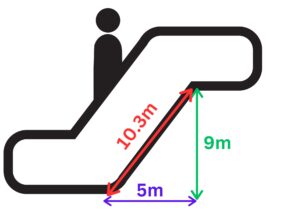GCSE Work done
Work done
Work done means energy transferred. So, when work is done, energy is transferred from one energy store to another energy store.

The boy lifts the box from the ground to above his head, so chemical potential energy store is transferred mechanically to gravtiational potential energy store
The boy does 200J of work on the box, to raise its height. This means that the box will increase its gravitational potential energy store by 200J
Work done depends on:
Force
Distance moved in the direction of the force



The larger the force used, or the greater the distance the object travels, the greater the work done, or energy transferred.
Force is directly proportional to work done
Distance travelled in the direction of the force is also directly proportional to the work done.
Examples of questions

2. The man has a weight of 500N and is being lifted upwards from the bottom platform to the upper platform by the escalator. Calculate the work done in lifting the man from the lower platform, to the upper platform.
In this case, the man is being lifted, so the force is acting upwards. Therefore the distance that should be used would be the 9m.
Work done = force x distance moved in the direction of the force
Work done = 500N x 9m = 4500J
Practice Questions
1.A man lifts a box of fruit with a weight of 200N from the ground to 1.5m above the ground. Calculate the work done
2. A ferromagnetic crane lifts some scrap iron of weight 20kN upwards from the ground, travelling a distance of 350cm. Calculate the work done.
3. 40000J of work is done to push a car of weight 7000N along a length of road. Calculate how far the car travels.
4. Sketch a graph to show the relationship between work done and force. Put work done on the Y axis and Force on the X axis.
Need more questions, try our worksheets.
Absorption and Emission of EM Radiation
JJ Thomson and Plum pudding model
Ernest Rutherford and the Nuclear Model
Niels Bohr changing the Nuclear Model
Discovering the Proton and Neutron
Measuring radiation from radioactivity
Radiation types and properties
Random nature of radioactive decay
Radioactive contamination or irradiation
Hazards of contamination and irradiation
Studies on the effects of radiation on humans
Different half lives of radioactive isotopes
Nuclear Fission Chain Reaction
Writing nuclear fission equations